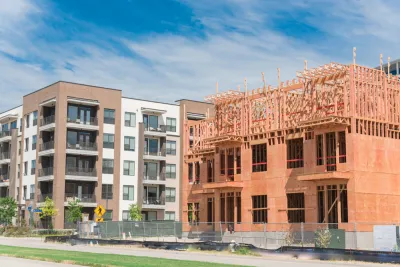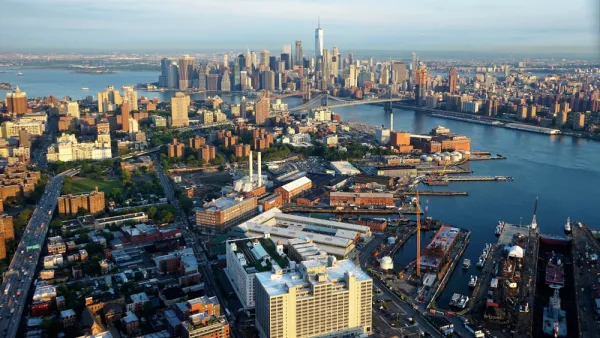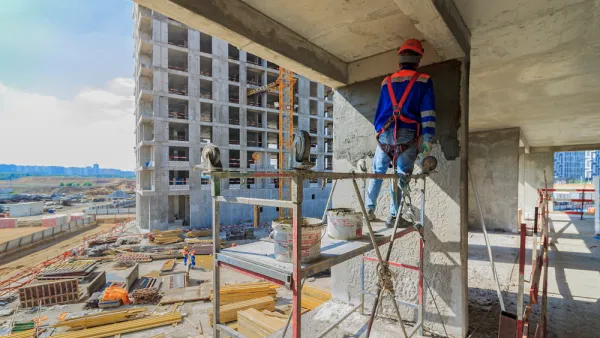A study that made the rounds as a working paper at the beginning of 2019 has now been published in a peer-reviewed journal.

A study years in the making has added a new reference in the debate about the effects of large new apartment developments on low-income neighborhoods located nearby.
The study, titled "Local Effects of Large New Apartment Buildings in Low-Income Areas," was published by The Review of Economics and Statistics on May 6, but the research first attracted attention it the beginning of 2019. Planetizen blogger Michael Lewyn introduced the research findings (in what was then a working paper) as potential ammunition for the YIMBY response to rising housing costs in large cities with restrictive zoning codes and low amounts of residential development.
Now published in a peer-reviewed journal, the research finalizes its findings, as summarized in the study's abstract: "New buildings decrease rents in nearby units by about 6 percent relative to units slightly farther away or near sites developed later, and they increase in-migration from lowincome [sic] areas."
The researchers argue that new apartment developments achieve price reductions in nearby neighborhoods by absorbing high-income households and increasing local housing stock. "If buildings improve nearby amenities, the effect is not large enough to increase rents. Amenity improvements could be limited because most buildings go into already-changing neighborhoods, or buildings could create disamenities such as congestion," reads the abstract.
For more of the latest on the subject, researchers at the University of California, Los Angeles recently published a survey of recent research on the consequences of new development for local housing markets.
FULL STORY: Local Effects of Large New Apartment Buildings in Low-Income Areas

National Parks Layoffs Will Cause Communities to Lose Billions
Thousands of essential park workers were laid off this week, just before the busy spring break season.

Retro-silient?: America’s First “Eco-burb,” The Woodlands Turns 50
A master-planned community north of Houston offers lessons on green infrastructure and resilient design, but falls short of its founder’s lofty affordability and walkability goals.

Delivering for America Plan Will Downgrade Mail Service in at Least 49.5 Percent of Zip Codes
Republican and Democrat lawmakers criticize the plan for its disproportionate negative impact on rural communities.

Test News Post 1
This is a summary

Test News Headline 46
Test for the image on the front page.

Balancing Bombs and Butterflies: How the National Guard Protects a Rare Species
The National Guard at Fort Indiantown Gap uses GIS technology and land management strategies to balance military training with conservation efforts, ensuring the survival of the rare eastern regal fritillary butterfly.
Urban Design for Planners 1: Software Tools
This six-course series explores essential urban design concepts using open source software and equips planners with the tools they need to participate fully in the urban design process.
Planning for Universal Design
Learn the tools for implementing Universal Design in planning regulations.
EMC Planning Group, Inc.
Planetizen
Planetizen
Mpact (formerly Rail~Volution)
Great Falls Development Authority, Inc.
HUDs Office of Policy Development and Research
NYU Wagner Graduate School of Public Service





























